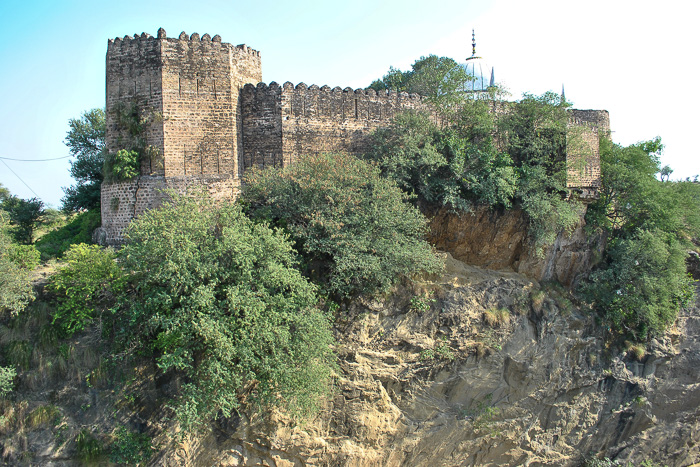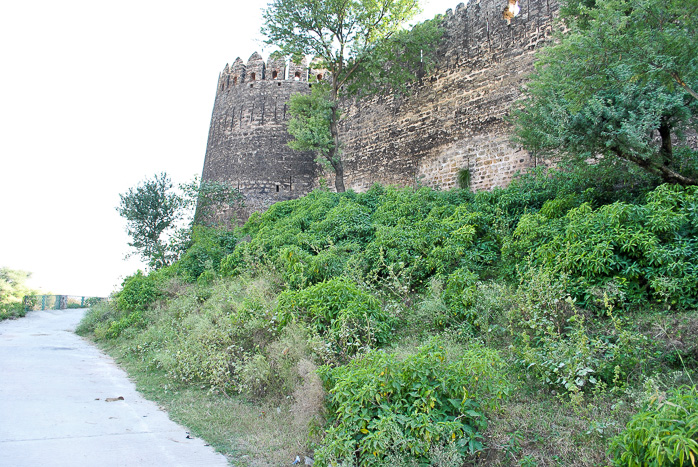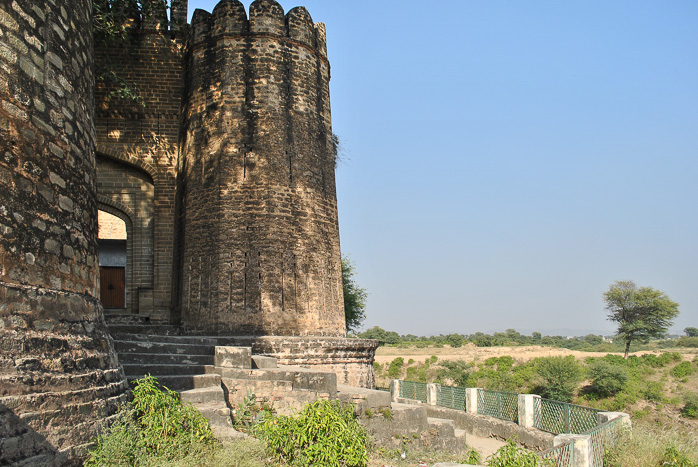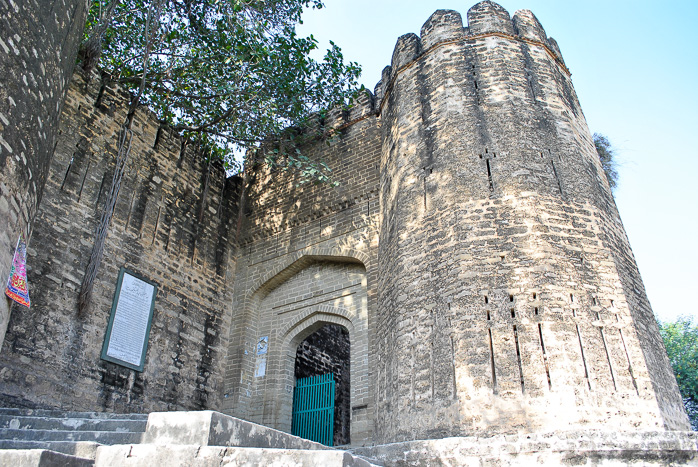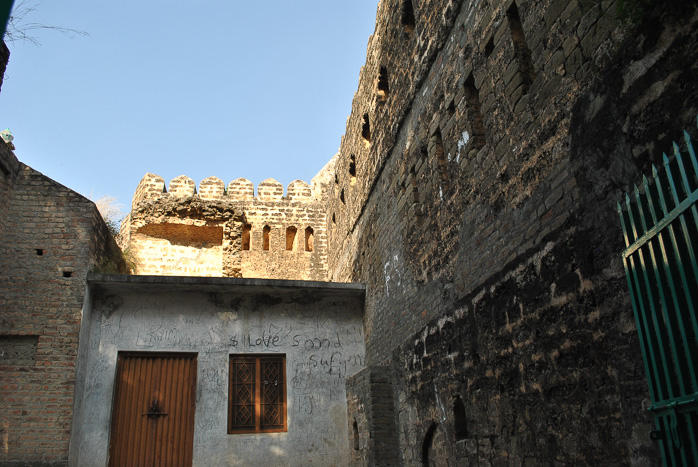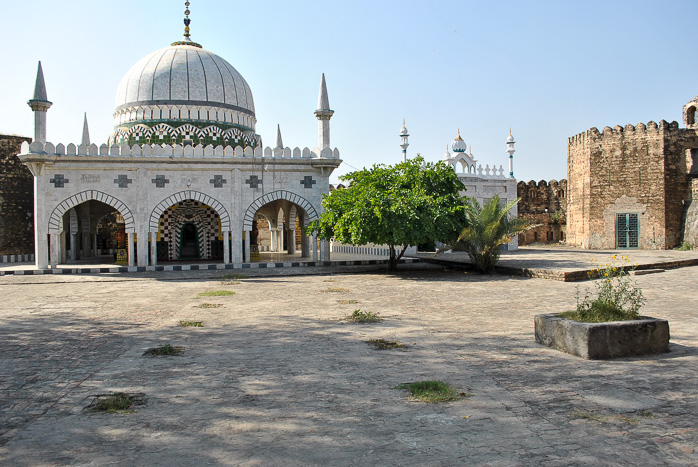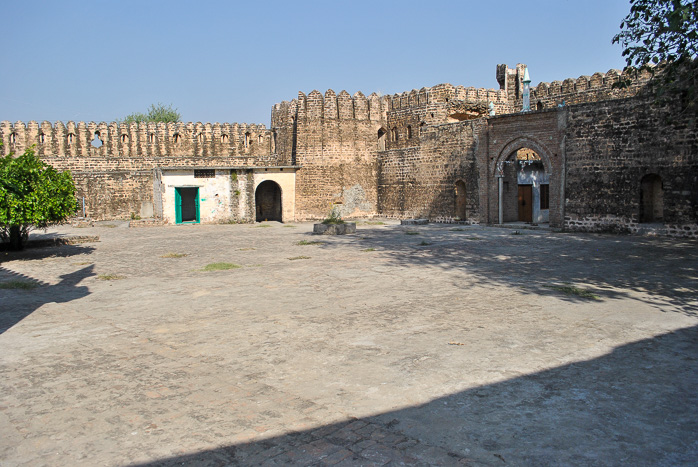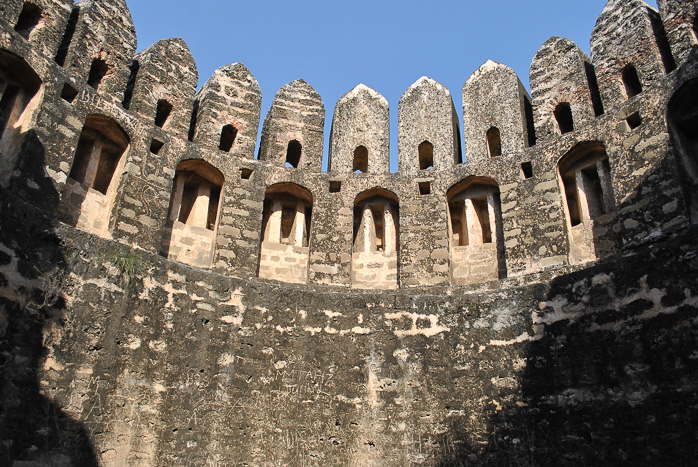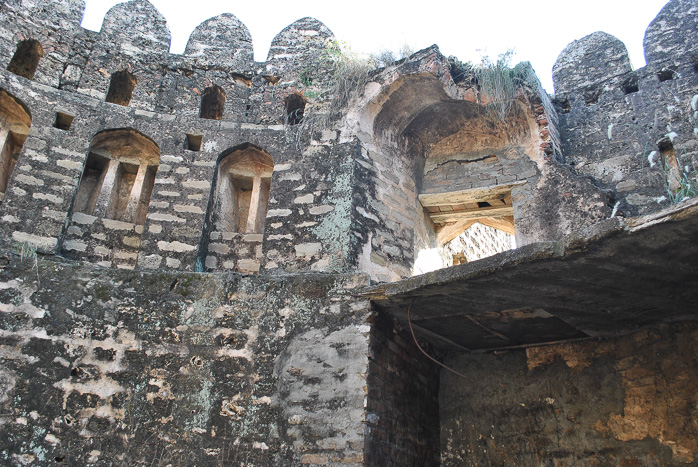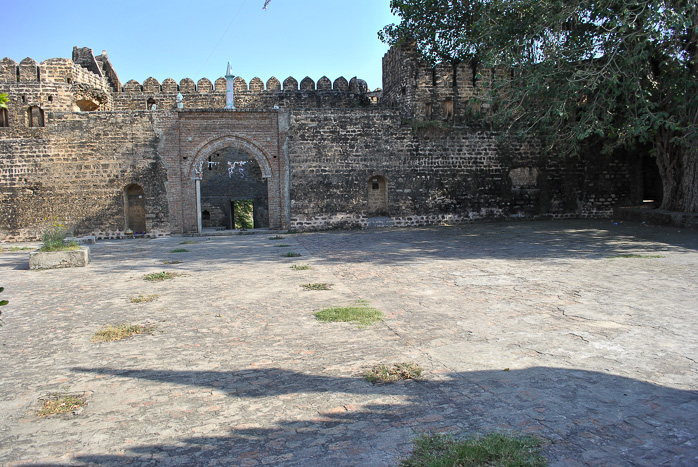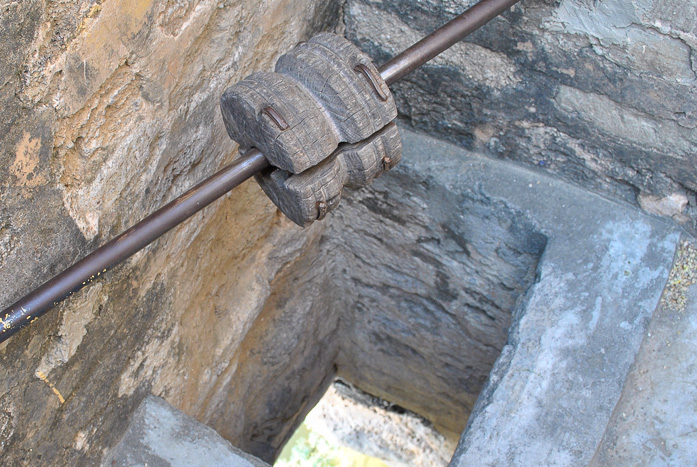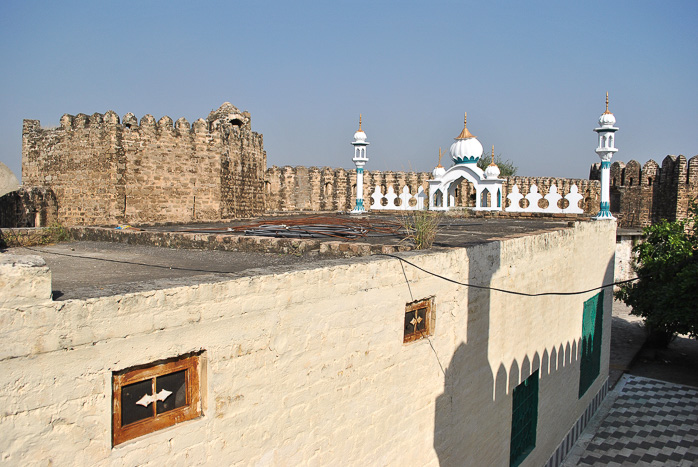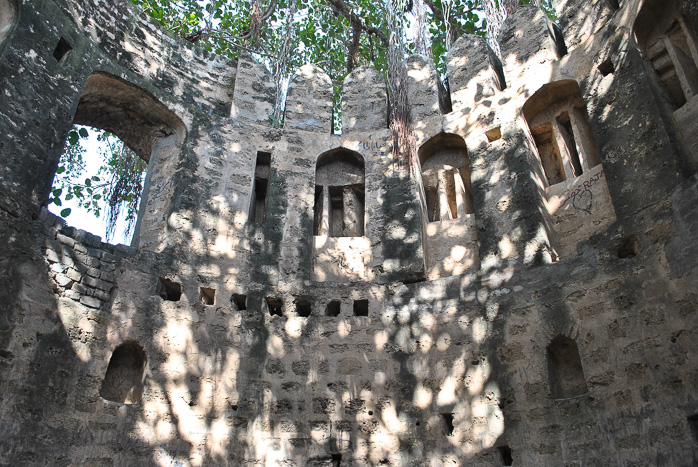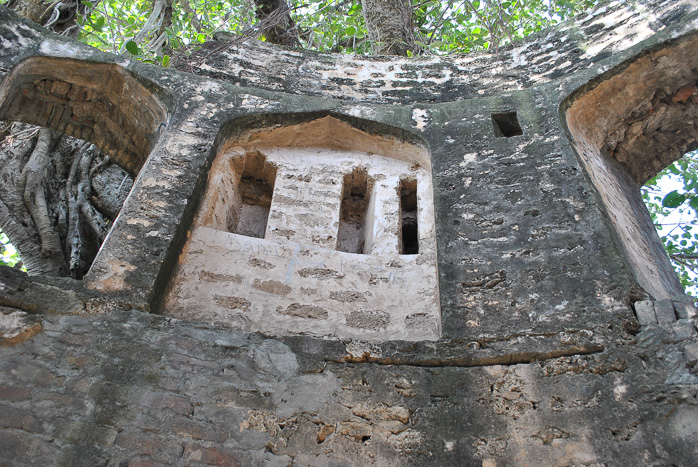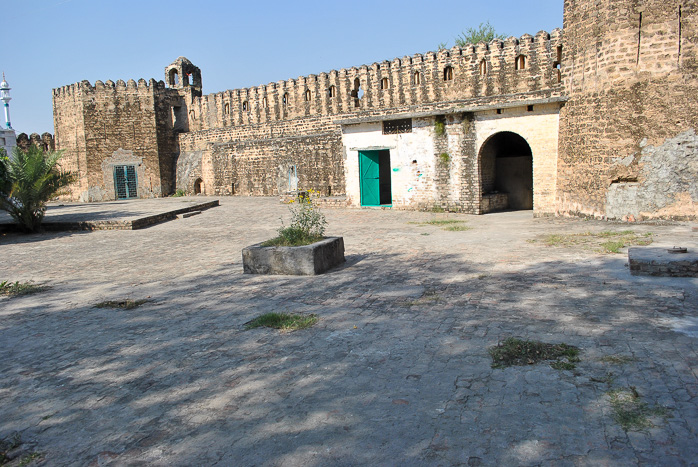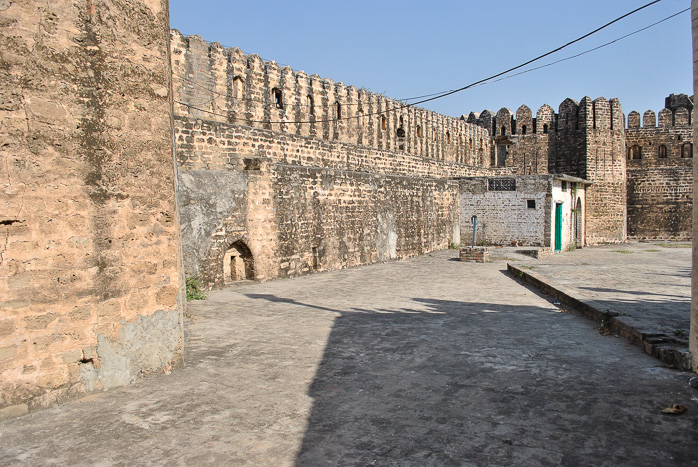Sangni Fort
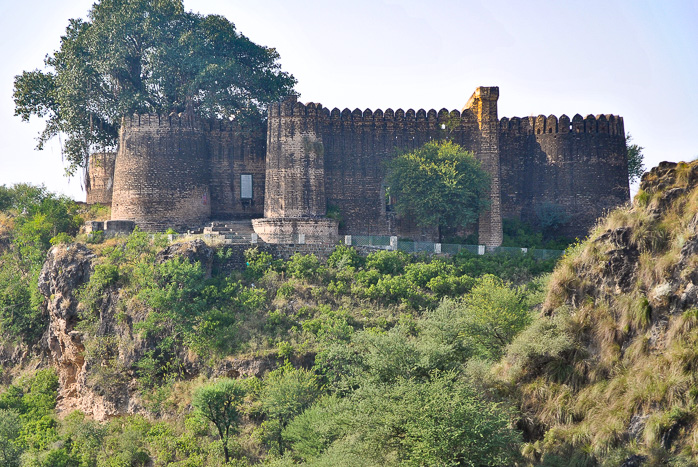
Este reducto es uno de una serie de fortificaciones que se extienden a lo largo de la meseta de Potohar, ubicada a medio camino entre el Fuerte Ramkot, 25 kilómetros al sureste, y el Fuerte Rawat, 28 kilómetros al WNW. Probablemente se construyó a finales de la era mogol, pero se reforzó en gran medida durante el período sij a partir de 1814. Más tarde se reutilizó como cárcel, ya sea bajo los sijs o posiblemente después de la toma británica del Punjab a partir de 1849. Hasan señala que, según la tradición oral, su nombre original era Sangi, pero fue cambiado a Sangni (o Sangani) en la era de Ranjit Singh. Se desconoce el origen del nombre, pero puede referirse a la palabra sangum, que significa "Punto de encuentro", en referencia a dos arroyos cercanos al fuerte. Otra posibilidad es que el nombre se tome de la palabra piedra, que se canta. Una etimología menos plausible es que sangni es una corrupción de Singh, un apellido sij común.
La fortaleza se encuentra en un montículo naturalmente defendible con una pendiente pronunciada hacia el oeste, con un terreno inclinado algo menos profundo hacia el sur y el este. Solo desde el norte el acercamiento es razonablemente nivelado, presentando el mayor desafío para los defensores. Las defensas de la ciudadela comprenden cuatro torres de esquina conectadas por altos muros cortina, todas rematadas con almenas y equipadas con numerosas troneras y arcos de flechas para arqueros y artilleros. Su única entrada, orientada al este, es una barbacana con dos torres dedicadas, lo que garantiza que cualquier atacante que lograra atravesar la puerta principal sería inmovilizado con fuego desde arriba. Un parapeto en el lado oeste de la fortaleza incluye una abertura en el piso equipada con un cabrestante, lo que permite a los defensores sacar agua directamente de un arroyo adyacente ubicado debajo, sin que nadie tenga que salir de la fortaleza.
La fortaleza parece estar en condiciones estructurales razonables, aunque una serie de ranuras y muescas en las fachadas interiores de los muros cortina sugieren la presencia anterior de plataformas de madera o pasarelas que ya no existen. La entrada principal también parece haber sido equipada con una o posiblemente dos puertas que desde entonces han desaparecido. Estos han sido reemplazados en los tiempos modernos con puertas de acero para limitar el acceso fuera de horario.
En tiempos recientes, los seguidores de Sahibzada Abdul Hakeem, un anciano sufí, erigieron un santuario en su honor dentro del fuerte. Hakeem fue un predicador itinerante que atrajo a muchos discípulos de las aldeas de la meseta de Potohar.
This redoubt is one of a string of fortifications running along the Potohar plateau, located mid-way between Ramkot Fort 25 kilometers to the southeast and Rawat Fort 28 kilometers to the WNW. It was likely constructed in the late Mughal era but was extensively strengthened during the Sikh period beginning in 1814. It was later repurposed as a jail either under the Sikhs or possibly after the British takeover of the Punjab from 1849 onward. Hasan notes that according to oral tradition its original name was Sangi, but was changed to Sangni (or Sangani) in the era of Ranjit Singh. The origin of the name is not known, but it may refer to the word sangum, which means "Meeting point", in reference to two streams near the fort. Another possibility is that the name is taken from the word for stone, which is sang. A less plausible etymology is that sangni is a corruption of Singh, a common Sikh surname.
The fortress stands on a naturally defensible hillock with a steep slope to the west, with somewhat shallower sloped ground to the south and east. Only from the north is the approach reasonably level, presenting the greatest challenge for the defenders. The citadel's defenses comprise four corner towers connected by high curtain walls, all topped with battlements and fitted with numerous embrasures and arrow loops for archers and gunners. Its sole entrance, facing east, is a barbican with two dedicated towers, ensuring that any attackers who managed to breach the main gate would be pinned down with fire from above. A parapet on the west side of the fortress includes an opening in the floor fitted with a winch, allowing the defenders to draw water directly from an adjacent stream located below, without anyone needing to exit the fortress.
The fortress appears to be in reasonable structural condition, though a series of slots and notches on the inner facades of the curtain walls suggest the former presence of wooden platforms or walkways which are no longer extant. The main entrance also appears to have been fitted with one, or possibly two doors which have since vanished. These have been replaced in modern times with steel gates to limit off-hours access.
In recent times followers of Sahibzada Abdul Hakeem, a Sufi elder, erected a shrine in his honor within the fort. Hakeem was an itererant preacher who attracted considerable disciples from villages across the Potohar plateau.
